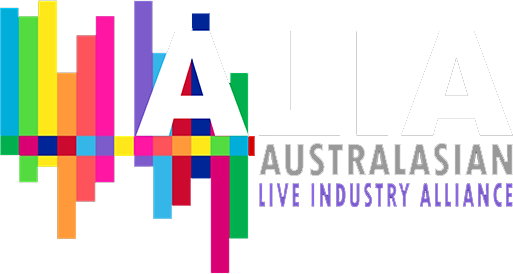On James Blunt’s current “Some Kind of Trouble” world tour lighting designer Paul Normandale is using 50 Martin MAC 101 wash lights along with 12 of Martin Professional’s new MAC 101 CT units, a versatile white light variant of the ultra-compact fixture.
“The MAC 101 CTs allow cold and warm key lighting fill as well as a range of movement for shadows or movement cues to the crowd, etc.,” Normandale states. “The added bonus is being able to tweak them should a player move or the fixture get knocked without technicians running onto the stage. The warm/cold option also allows some feel or tone to specific songs.”
High quality, pure white light
The Martin MAC 101 CT is one of three new white light versions of the popular MAC 101. Incorporating both cold and warm white LEDs, the CT version allows for easy changes in colour temperature and features simple intensity control. Each MAC 101 CT is colour temperature calibrated to ensure a high quality of white light and visual consistency across fixtures. The other two white light variants – the MAC 101 WRM™ and MAC 101 CLD™ – use pure warm LEDs and pure cold LEDs respectively.
On the James Blunt tour, the MAC 101 CT fixtures are used as front light on the band members to provide mostly warm but also some colder light looks. The 101s super small footprint allows the fixtures to sit discretely on the stage floor.
MAC 101 versatility
The standard RGB version MAC 101s fulfill the role of a latter day wall of PAR cans for the 1979-82 New York-themed set, says Normandale. Located on ladders at the back of the stage – 5 columns of 101s, each column with five pairs – Normandale comments, “The 101s are good for beam looks and can cut through the light from the other MACs so they are very bright.”
Besides a tight and bright beam, the MAC 101 is speedy, is colour calibrated and is ideal for pixelmapping video content. “We’re pixelmapping them with swirls and patterns but what we’re mainly doing is taking the color from the video and running it straight through the 101s because they react really fast,” says Glen Johnson, lighting director for the tour. “We match them up against a load of other types of LEDs. The 101s work really well, reacting almost instantaneously. It’s very good for mapping.
“We have LED columns going up the sides – on each of the drops of light we run the video across and the 101s react perfectly at the same time. The 101s do all the fast moves and are great for quick marking – they’re like a moving mirror. You can do some really fast fade outs, instant move to another position and back again, so the speed is really good on them.
“And they’re bloody reliable. We just throw them up; they’re so small and lightweight. Even the 12 CT versions straight off the production line have had no problems,” Johnson concludes.
For the Australian tour the MAC 101’s have been replaced by the equally impressive MAC 301. Phaseshift Productions has supplied the rig which also includes Martin MAC 700 Profiles, MAC 700 Washes and MAC 2000 Wash XBs
grandMA2 light in control
A grandMA2 light was chosen for control with 2 x grandMA2 lights on the tour, running in full tracking back up, with networking provided via 2 x MA NPU (Network Processing Unit).
The main reason that grandMA2 was chosen for this tour – apart from the fact that it is Johnson’s current console of choice – is that they are using the desk’s DMX merging facility to enable video content stored on a Catalyst media server to be run through the MAC 301 LED moving lights and 24 x Sun Strip MR16 battens.
The grandMA2 takes in Art-Net from the Catalyst, allowing Johnson to merge four universes of DMX in the desk, and send colour and intensity information from the Catalyst out as standard DMX – via the MA NPU – to the 101 and Sun Strip. This allows these specific lights and six columns of Barco Stealth LED screens upstage to be perfectly pixel-mapped and run harmoniously from the same video triggers. The video content was specially created for the tour by film maker Julie Jacob.
The video mapping is currently programmed into six songs, and Johnson also has the option of bringing up the lights as a layer on the Catalyst and applying clips to the lights almost instantaneously on the fly. He can also control all the fixtures as conventional light sources via the desk. This function of the grandMA2 came with the first release of version 2.1 software, and could produce exactly the effects that Normandale wanted for certain elements of the show.
Apart from the DMX merging, Johnson likes numerous features of the grandMA2 architecture, and was one of the first lighting directors and programmers to take up the platform when it was launched in 2009.
He says, “grandMA2 light is a small and lightweight working surface with an extremely neat footprint and everything is laid out exactly as you would wish. The syntax is so logical that you don’t even need to read the manual – it’s extremely straightforward to programme and run”. He admits that he has never had to consult a manual for anything he’s wanted to do on an grandMA2.
























































You must be logged in to post a comment Login